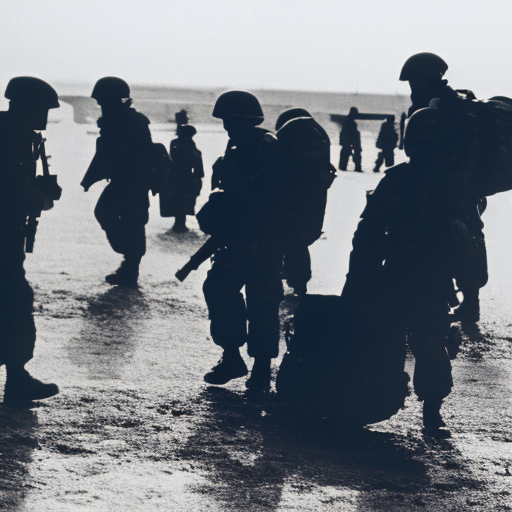Summary:
International military intervention against ISIL refers to the collective efforts of various countries and coalitions to combat the Islamic State of Iraq and the Levant (ISIL), also known as ISIS or Daesh. The intervention aimed to degrade and ultimately defeat the extremist group, which had gained significant control over large parts of Iraq and Syria. The campaign involved a combination of airstrikes, ground operations, and support for local forces fighting against ISIL. The intervention began in 2014 and has had a significant impact in reducing the territorial control and capabilities of ISIL.
Background:
ISIL emerged in the early 2000s as an offshoot of Al-Qaeda in Iraq. The group gained prominence during the Syrian Civil War and the subsequent power vacuum in Iraq, taking advantage of the chaos to seize territory and establish a self-proclaimed caliphate. ISIL’s brutal tactics, including mass killings, beheadings, and enslavement, drew international condemnation and led to calls for action to counter the group’s expansion.
Coalition Formation:
In response to the threat posed by ISIL, a coalition of countries was formed to coordinate military action against the group. The coalition included the United States, European countries, Arab states, and other regional partners. The coalition aimed to provide support to local forces fighting against ISIL, conduct airstrikes against key targets, disrupt the group’s financing and recruitment networks, and provide humanitarian assistance to affected populations.
Airstrikes and Ground Operations:
The intervention primarily relied on airstrikes to target ISIL positions, infrastructure, and leadership. The United States, as the leading member of the coalition, conducted the majority of these airstrikes, often in coordination with local forces on the ground. Other coalition members also contributed airstrikes and logistical support. In addition to airstrikes, ground operations were carried out by local forces, supported by coalition advisors and special forces. These ground operations aimed to retake territory from ISIL and disrupt the group’s activities.
Impact and Challenges:
The international military intervention has had a significant impact on ISIL. The group has lost a significant amount of territory, including key cities such as Mosul in Iraq and Raqqa in Syria. The loss of territory has severely undermined ISIL’s ability to govern and finance its operations. The intervention also targeted the group’s leadership, resulting in the deaths of several key figures. However, ISIL remains a threat, with the ability to carry out terrorist attacks and maintain a presence in some areas.
The intervention has faced several challenges. The complex and fluid nature of the conflict in Iraq and Syria, with multiple factions and competing interests, has made coordination and cooperation difficult. The intervention has also raised concerns about civilian casualties and the potential for unintended consequences, such as the displacement of populations and the exacerbation of sectarian tensions. Additionally, the intervention has not addressed the underlying political and social factors that contributed to the rise of ISIL, such as governance failures and sectarian divisions.
Conclusion:
The international military intervention against ISIL has been a significant effort to combat the extremist group and its self-proclaimed caliphate. Through a combination of airstrikes, ground operations, and support for local forces, the intervention has succeeded in reducing ISIL’s territorial control and capabilities. However, the challenges faced by the intervention highlight the need for a comprehensive and long-term approach to address the root causes of extremism and instability in the region. The fight against ISIL continues, with efforts focused on preventing the group’s resurgence and promoting stability and reconciliation in Iraq and Syria.












